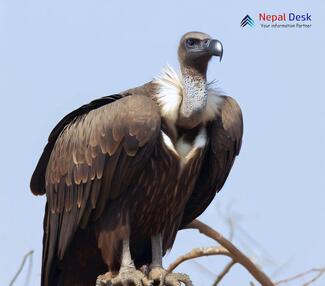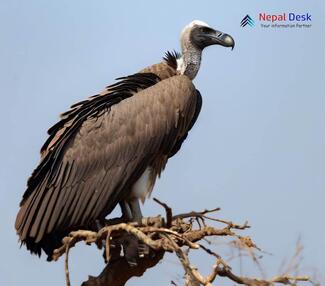The awe-inspiring White-rumped Vulture (Gyps bengalensis) is a captivating bird of prey that has garnered the admiration of avid birdwatchers across the globe. With its striking looks and exceptional scavenging skills, it plays a crucial part in maintaining the balance of its ecosystem. In this article, we'll delve into the specifics of this remarkable bird and examine its presence and importance within Nepal's diverse ecosystem.
Distinctive Features and Habits
As the name suggests, the White-rumped Vulture is characterized by its unique white rump, which stands out against its dark brown feathers. These impressive birds can have a wingspan reaching 7.5 feet, making them an imposing figure in the skies. They possess a bald head, often featuring light blue or pinkish skin, to keep clean whilst feasting on carcasses.
Feeding predominantly on carrion, these vultures have a critical job in disposing of dead animals and curbing disease spread. Blessed with exceptional eyesight, they can spot carcasses from afar and are known to congregate in large numbers when food is plentiful.
A Home in Nepal
Nepal boasts an incredible variety of plant and animal life, making it an ideal destination for wildlife aficionados. Among its numerous bird species, the White-rumped Vulture can be found across the nation. They inhabit open grasslands, forests, and even urban areas where food sources are abundant.
This species once thrived throughout South Asia; however, its population has suffered tremendously in recent years. In Nepal specifically, they face major challenges due to habitat destruction, diminished food sources brought about by veterinary drug usage in livestock, as well as direct poisoning.
Protective Measures
Acknowledging the vital role vultures play in maintaining healthy ecosystems and their alarming population decline, conservation initiatives are being implemented to safeguard the White-rumped Vulture and other vulture species throughout Nepal. Such efforts include the establishment of Vulture Safe Zones, where carcasses devoid of damaging veterinary drugs are supplied to promote healthy vulture populations.
Furthermore, community-oriented awareness programs are designed to inform locals about the ecological significance of vultures and their conservation requirements. The Nepalese government has also taken action to prohibit the veterinary use of diclofenac—a drug known to contribute to the decreasing vulture numbers.
Final Thoughts
The White-rumped Vulture is a truly mesmerizing bird of prey and an indispensable component of Nepal's rich and diverse ecosystem. While this majestic creature faces numerous obstacles due to human interference, current conservation initiatives provide hope for its long-term survival. By preserving these exceptional beings, we uphold an essential ecological equilibrium – allowing future generations to admire and learn from these compelling birds of prey.




